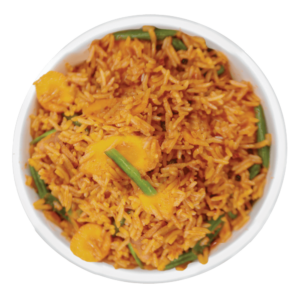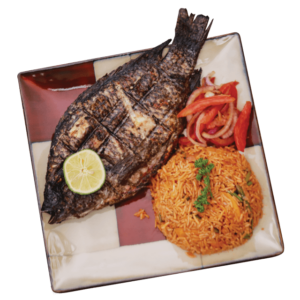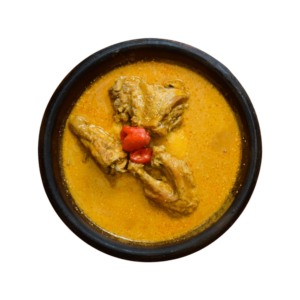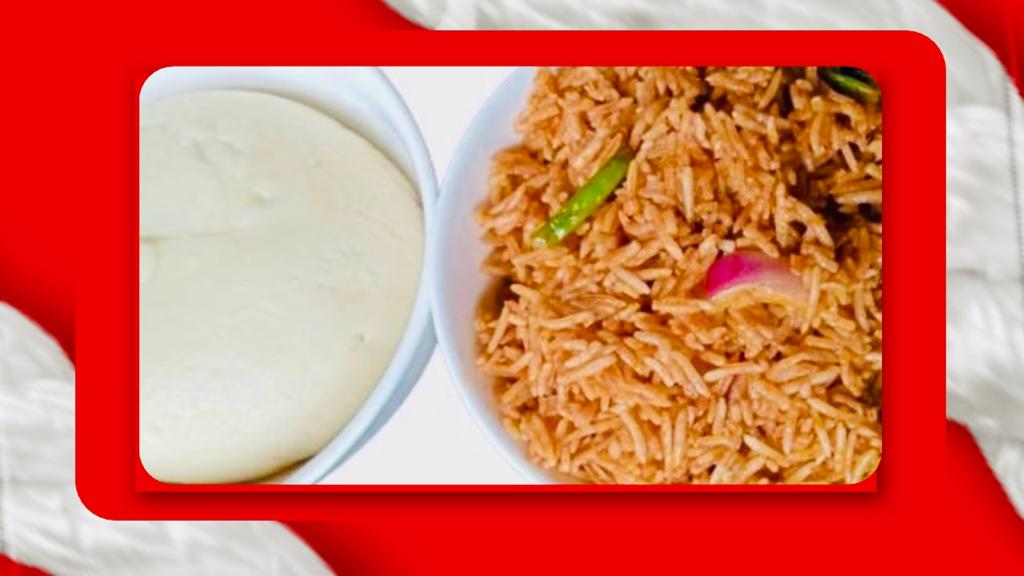Most would argue that the best known West African delicacy is Jollof, others, Fufu. These two have been going against each other for the longest time over which is more popular than the other.

Fufu is a doughy, smooth, elastic, delicious and filling delicacy that is swallowed rather than chewed to give a feeling of fullness and satisfaction throughout the the day. A swallow food made of cassava, yams or plantains boiled, pounded and rounded into balls. It is usually dipped into sauces or eaten with various stews of meat, vegetables and fish such as Egusi, Eforiro, Okra and Ewedu.
However, Jollof is a rice dish prepared with long grain rice, onions, vegetables, variety of African spices and meats with pureed tomatoes for its red color all cooked in a single pot. Jollof is eaten with soups and stews including Egusi, Suya chicken, curried goat stew, Okra, Eforiro, any and all other accompaniments of choice.

Jollof, according to African folklore, originated from the Senegambia region of West Africa and was originally called 'Benachin' or 'Thieboudienne' by the Wolof people who inspired its now popular name Jollof in the rest of West Africa and the world at large. Fufu, on the other hand, originated from Ghana following their introduction to Cassava by the Portuguese in the 16th Century and
later spread to rest of West and Central Africa. Jollof sure does prove resilient as it is already involved in the West African ‘Jollof Wars’ between its various variants in Ghana, Nigeria, Sierra Leone , Liberia and Cameroon and with each country believing theirs is superior in taste than the others.
When comparing the taste between these two cuisines, Fufu has a midly sour flavor and is much preffered eaten with various stews and soups rather than on its own. It has nearly only two variants, fermented cassava dough Fufu called Akpu and surprisingly, there’s also an existence of Caribbean Fufu, just to put it out there! Jollof is rather spicy and tasty due to the various spices and ingredients used in its preparation, it also boasts different variants from different West African countries that are prepared with slightly different ingredients, meat choices and spices as well as the cooking process. There’s Nigerian Jollof, Ghanaian Jollof, Bissau Jollof, Sea- food Jollof, Basmati Jollof, Oven-baked Jollof, Suya Jollof, just to mention a few.

Fufu is easier and faster to prepare as it involves a few ingredients while Jollof might take longer due to the number of ingredients involved and rice sure does need steaming for that extra fluffiness.The uniting power is both cultural treasures provide nutritional health benefits. While Jollof is a source of protein,provides energy, strengthens the immune system, contains niacin and selenium, and is rich in manganese. Fufu provides vitamins, fiber and minerals like Beta carotene, an anti oxidant and choline for nerve and brain function. Potassium for the heart, kidney and muscle function. Keep this in mind though, over eating, no matter how tasty the meal, will lead to obesity in the long run. Enjoy the meal but do not over indulge.
It is irrefutable that both delicacies put up a great fight in all they have to offer. A major reason as to why they take the top positions as the most popular West African cuisines. From the tantalizing tastes, to the rich history, variations, preparation, nutritional provisions, yummy accompaniments and ingredients used in their preparations.
These two are great delicacies that are widely enjoyed in West Africa and the rest of the world at large, hence their rivalry in popularity. This is a wrangle, for the top position in a worldwide popularity contest and for every wrangle, there’s a winner and loser. As the decision maker, all you have to do is visit or order from Mama Ashanti, get a taste of the best of both worlds and decide which one takes it home.
-
 Jollof RiceKShs 950
Jollof RiceKShs 950 -
 Whole Grilled Fish BonelessKShs 1,800
Whole Grilled Fish BonelessKShs 1,800 -
 Chicken with Groundnut SoupKShs 2,000
Chicken with Groundnut SoupKShs 2,000
